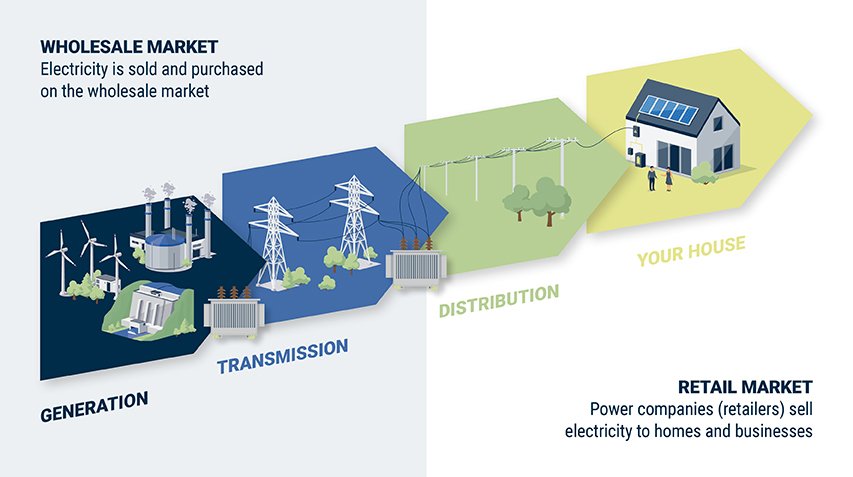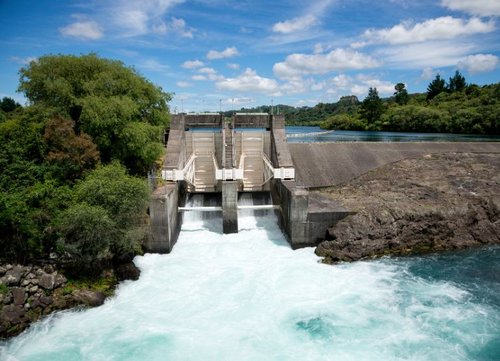How electricity works

What is electricity?
Electricity is created when electrons are transported from one place to another through a conductive medium, by a moving magnetic field from a generator. The electrical force that ‘pushes’ electrons is the 'voltage' and the number of electrons that flow in a wire is the 'current'.
Generators convert kinetic, or moving energy, into electrical energy, usually by rotating. When a magnet is passed close to a conductive wire, it induces electron movement inside that wire. A generator uses a rotating force, usually from a turbine, to pass a number of strong magnets close to coils of conductive wire, to induce an electrical current. This current is then sent along wires to a transformer. This transformer changes the electric current into the transmission grid.
How does electricity get to you?

Electricity is generated at power stations across New Zealand. Generators make electricity from primary energy sources by harnessing water, wind, sun, geothermal energy, coal and gas. The electricity produced is of immense voltage and current and is too powerful to feed directly into your home - it would immediately destroy all connected appliances!
From power stations, electricity flows through large transmission lines which carry it to substations. This electricity is sent at high voltage, as a small proportion is lost along the way as heat in the power lines. Keeping the voltage high ensures that as little electricity as possible is lost along its journey.
Distribution lines carry electricity from substations to homes, schools and businesses. Transformers at the substation change the electricity current and voltage to make it suitable for local wires and consumption. The electricity enters your home through your meter, where it is measured, and into your power outlets, where it is ready to be used.
Is there enough power for us all?
Every day we monitor the power system to make sure there is enough power for Aotearoa, for this year and years to come.
New Zealand's electricity system is evolving at pace to electrify Aotearoa and reach net zero carbon emissions for 2050. Electricity demand is expected to increase by up to 82% by 2050 (baseline 2013).
To meet this additional demand, more electricity generation is being built (like geothermal power plants, wind and solar farms), and new technological advancements are being introduced (like smart grid technologies and smart energy systems).
Why do power cuts occur?
Power cuts are rare, but happen from time to time in New Zealand. Even though power companies aim to supply constant electricity, it cannot be guaranteed.
Eye on electricity explainers
